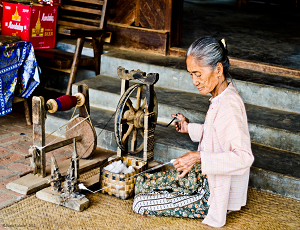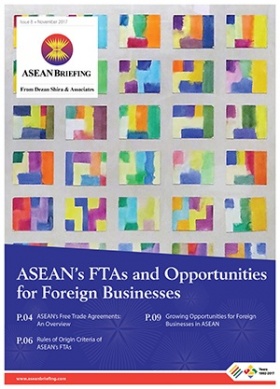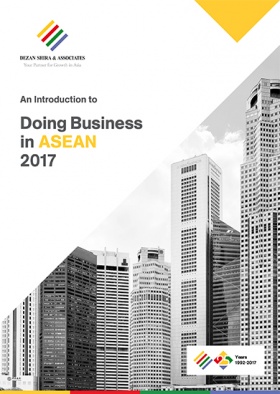Threading the Needle: the Rise of Myanmar as a Garment Manufacturing Alternative
 With the government of Myanmar passing its new Investment Law, which came into effect in April 2017, the country is showing its continued commitment to attracting foreign investment. After reopening its economy in 2012 following several political reforms beginning the year before, Myanmar has been receiving significant increases in foreign direct investment, reaching a high of US$9.5 billion in the 2015/2016 fiscal year ending in March. To put this in perspective, the total amount of FDI added up to only US$329.6 million in 2009/2010, the year before the military ceded power. While oil, gas, and energy remain the sectors with the highest FDI inflows, investments into Myanmar’s manufacturing industry are rapidly gaining traction, having risen from just US$33.2 million to over US$1 billion in the same period, and hitting a high of US$1.8 billion in 2014.
With the government of Myanmar passing its new Investment Law, which came into effect in April 2017, the country is showing its continued commitment to attracting foreign investment. After reopening its economy in 2012 following several political reforms beginning the year before, Myanmar has been receiving significant increases in foreign direct investment, reaching a high of US$9.5 billion in the 2015/2016 fiscal year ending in March. To put this in perspective, the total amount of FDI added up to only US$329.6 million in 2009/2010, the year before the military ceded power. While oil, gas, and energy remain the sectors with the highest FDI inflows, investments into Myanmar’s manufacturing industry are rapidly gaining traction, having risen from just US$33.2 million to over US$1 billion in the same period, and hitting a high of US$1.8 billion in 2014.
As China strives to move up the value chain and focus more on high-end manufacturing, the country’s wages have risen to the point where many garment manufacturers are looking to invest elsewhere.
Cambodia and Vietnam have already established themselves as alternatives, and now Myanmar is bringing a new labor force to the competition. Clothing exports have already gone up from US$337 million in 2010 to US$1.46 billion in 2015. And now that the economic sanctions by the EU and US have been lifted, the Myanmar Garment Manufacturers Association (MGMA) has set a target for exports to increase to US$12 billion by 2020. Doing so would create an estimated 1.25 million new jobs, a sharp increase from the approximately 250,000 people currently working in the garment industry.Lifting of sanctions from the EU and US
Before the military ceded power in 2011, Myanmar was suffering heavily from trade sanctions imposed by, amongst others, the EU and the US since 2003. Sanctions included visa bans, restrictions on financial services, prohibitions of imported goods from Myanmar, bans on new investments in Myanmar, and constraints on US assistance to Myanmar. As such, the country heavily relied on Japan and Korea for garment exports, to which it exported 38 percent and 31 percent, respectively, of its total garment exports in 2014.
However, as a result of the reforms, sanctions have mostly been lifted. In 2013, the EU lifted all economic sanctions – except for those on arms – and granted the country Generalized System of Preference (GSP) trade privileges, meaning that Myanmar receives duty-and-quota-free access to the EU market. The US followed suit when Barack Obama, after visiting the country in September 2016, lifted almost all sanctions imposed on the country.
These are rewards for the country’s stabilizing political landscape and create new opportunities for foreign investors. The new Investment Law further eliminates the discrepancies between local laws and laws applying to foreign investors, while also offering several incentives related to taxation and land use rights. This paves the path for foreign investors looking to capitalize on the opportunities arising from affordable manufacturing in the country.
In October 2018, however, the EU sent a high-level mission to Myanmar to monitor and assess alleged human rights violations in the country, especially in Rakhine State. The EU has announced that the findings of the mission will inform its assessment whether to temporarily remove the preferential trade benefits for Myanmar under its ‘Everything but Arms Scheme (EBA)’.
Exponential growth in garment exports
The Burmese export value of textiles and garments has increased drastically since the economy reopened. With the exponential increase in garment exports since 2010, they now account for 10 percent of Myanmar’s total export revenues. This fiscal year Myanmar is poised to reach new heights. During the first five months of the 2016/2017 fiscal year starting in April, garments sector exports reached US$745.5 million, up from US$232.8 million during the same period last year. And looking ahead, the Myanmar Garment Entrepreneurs Association has set an export revenue target of US$12 billion in 2020. Accordingly, the number of jobs in the industry is projected to increase drastically from around 230,000 in mid-2015 to 1.5 million in 2020.
Regional competition
Despite this rapid growth, Myanmar’s export numbers are still lagging behind those of its regional competitors.
In the garment industry, Vietnam recorded US$28 billion of exports in 2015, while Cambodia’s exports totaled US$5.7 billion in the same year. Thus, while Myanmar is experiencing rapid growth, it still has a long way to go to reach similar levels.Favorable to Myanmar, however, is that minimum wages in Vietnam and Cambodia are significantly higher. Cambodia recently set the 2017 minimum wages for employees in the garment industry at US$153 per month, up from US$140 in 2016, while 2016 monthly minimum wages in Vietnam varied from US$107 to US$156, depending on the region. Myanmar’s monthly minimum wage of just US$67 (2015 data) makes it highly competitive with Cambodia and Vietnam and an attractive location for garment manufacturing, and large retailers such as Gap, H&M, Marks & Spencer and Primark have already found their way into the country.
Human rights issues and looking ahead
When considering manufacturing from Myanmar, it is important to perform proper due diligence when selecting factories to prevent human rights breaches. Last August 2016, news came out that Burmese factories operating for the Swedish company H&M employed 14-year-old workers for more than 12 hours a day, six days per week. This is not uncommon in the country, and investors have to make sure that these practices are not occurring in their factories, and to help prevent these practices from happening in the country altogether. Furthermore, as Myanmar only recently reopened its economy, it is still a very immature market. It is largely run by family businesses of small sizes, which comprise approximately 83 percent of the economy, and its infrastructure and banking system, although improving, are still relatively underdeveloped. As such, finding the right partners can be challenging, making patience key when operating in the country.
However, Myanmar’s trajectory is encouraging. Looking forward, with almost all economic sanctions being lifted and the new Investment Law coming into effect, Myanmar is set to sustain the high growth levels in its garment manufacturing industry. The government is actively seeking foreign investment, and with wage levels standing below those in competing ASEAN countries such as Vietnam and Cambodia, several large retailers have already entered the country. More retailers are expected to follow in the coming years, thereby confirming the emergence of Myanmar as a new competitor in Southeast Asia’s garment manufacturing industry.
Editor’s Note: This article was first published on December 9, 2016 and is updated on November 8, 2018, as per latest developments.
About Us
ASEAN Briefing is produced by Dezan Shira & Associates. The firm assists foreign investors throughout Asia and maintains offices throughout ASEAN, including in Singapore, Hanoi, Ho Chi Minh City and Jakarta. Please contact us at asia@dezshira.com or visit our website at www.dezshira.com.
- Previous Article 如何在印度尼西亚设立外商代表处
- Next Article Termination of Employees in ASEAN







